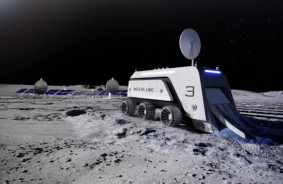The engineering firm Beca from New Zealand has developed a six-wheeled robot called PIPE-i to inspect hazardous drainage systems, taking over from humans in dangerous environments.
The development of PIPE-i took a year—from June 2022 to June 2023. The project commenced when Beca’s design engineers were tasked with evaluating a severely damaged drainage system located beneath a busy highway. Unable to find suitable commercial solutions, they opted to create their own robot.


The prototype's body was 3D printed using polycarbonate and carbon fiber. The robot features six separately suspended wheels, four LED panels with a brightness of 850 lumens, a swiveling front camera, lidar, and a Leica BLK360 3D scanner. The scanner is stored at the back of the unit under a cover and can be raised for operation as needed.
Currently, PIPE-i is remotely controlled in real-time using live camera feeds. However, the robot is already capable of performing certain functions autonomously, such as measuring distances to objects. The future commercial version is expected to incorporate artificial intelligence algorithms to enhance its autonomy.
Operators can instantly check the video feed from PIPE-i for issues in the drainage systems. Additionally, they can analyze a 3D model of the structure created by the built-in scanner. If necessary, the robot can be further equipped with an omnidirectional camera for 360-degree video capture.
A significant advantage of PIPE-i is its adjustable suspension. This feature allows the body to be lifted for optimal scanning or lowered to navigate beneath obstacles.
Source: Newatlas













Comments (0)
There are no comments for now